Gravitational waves are caught for the fourth time: how the Advanced Virgo detector helped
Today, the LIGO & Virgo collaboration was announced (to be published in the PRL, the article can be read here ) about the new detection of gravitational waves (GW170814). The first three events ( one , two , three ) were recorded on two LIGO detectors in the USA. On August 1, the European detector Advanced VIRGO , located in Italy, joined the observations. And on August 14, the gravitational waves from the confluence of two black holes were detected by all three detectors.
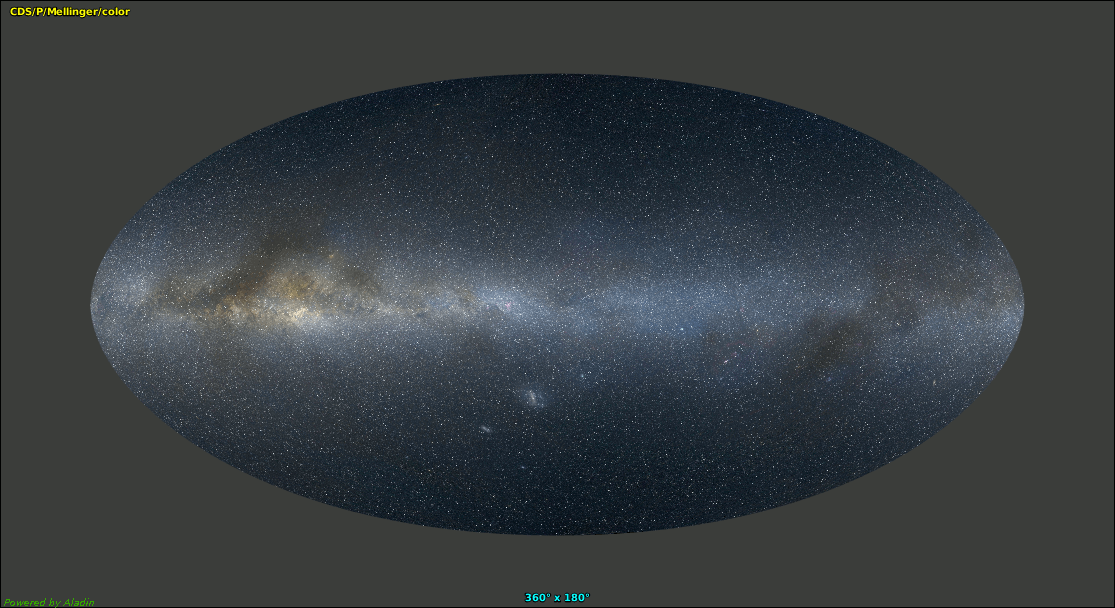
Assessment of the location of all registered sources of gravitational waves. The GW170814 is determined with much greater accuracy by using data from three detectors.
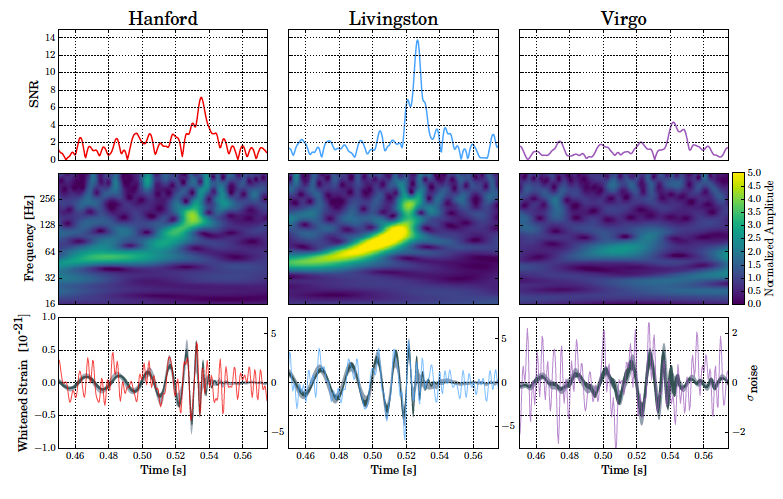
Top row: signal-to-noise ratio for three LIGO Hanford, LIGO Livingston and Virgo detectors; middle row: change in signal spectrum over time; bottom row: time signal (color), filtered signal (gray) and superimposed GR model (black)
As in the previous three times, the source of the signal was the merging black holes of masses 25 and 30 solar, at a distance of about 1.5 billion light years. As a result of the merger, a black hole with a mass of ~ 53 from the solar one formed, and ~ 2.7 solar masses were transformed into gravitational waves. Signal-to-noise ratio 18 gives the probability of an erroneous signal 1 in 27 thousand years. The signal itself correlates well with GR, there are no surprises here. The most interesting is the fact of detection on three detectors, and additional knowledge that we can get from this.
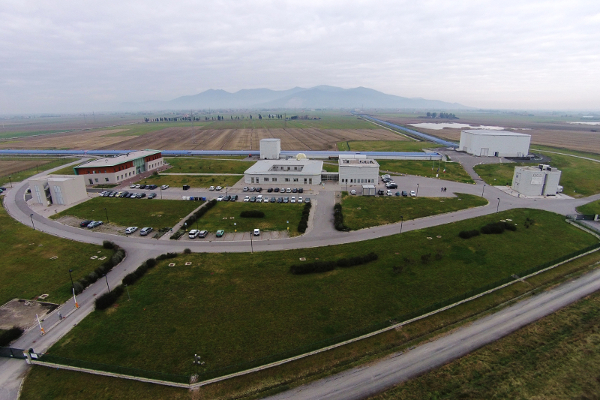
The European detector is located near Pisa, in Italy. The Virgo collaboration brings together scientists from Italy, France, Holland, Poland and Hungary. The detector itself is similar to Advanced LIGO, but with less sensitivity due to several factors: it is somewhat shorter - the length of the interferometer arms is 3 km, not 4, as in LIGO; mirror hangers are made of metal (less good quality and more thermal noise); less powerful laser; noise monitoring and filtering systems at an earlier stage of implementation.
As a result, the sensitivity at high frequencies is several times less than LIGO, and the detector itself is quite noisy. The spectrum clearly shows the unfiltered noise of the mains supply at 50 Hz, as well as peaks from different control signals.
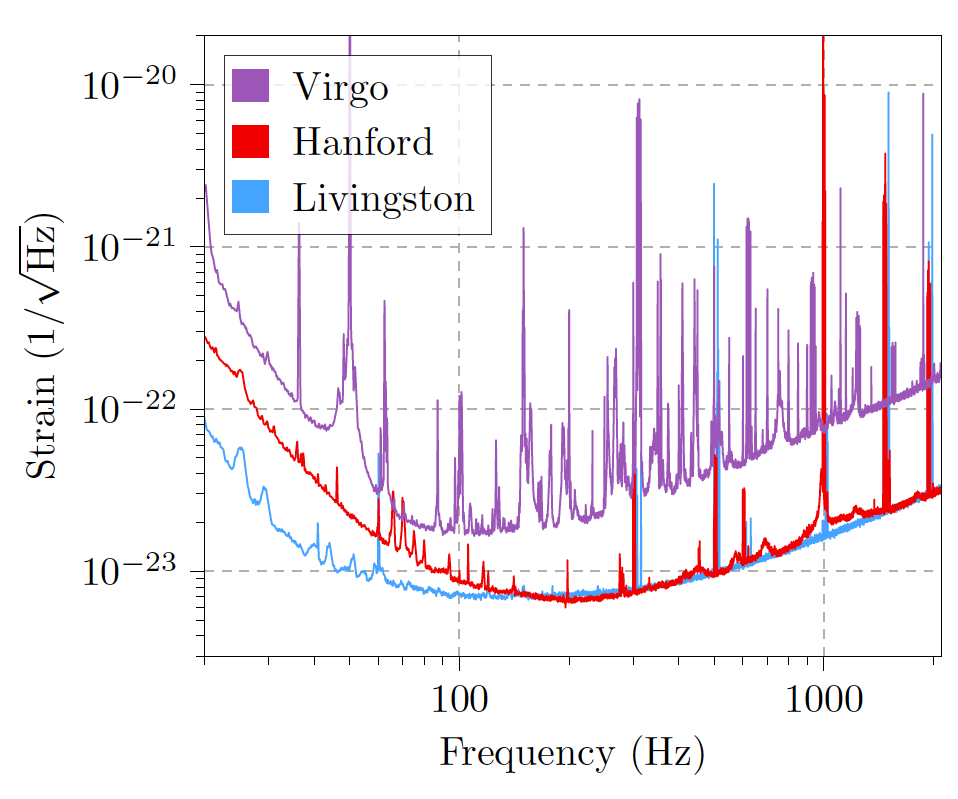
The spectral noise density of the detectors (with filtered known noise). The lower the noise, the higher the sensitivity of the detector.
The low sensitivity of Virgo hardly makes it possible to recognize a signal in noise (as seen in the second picture in the article), and without LIGO this signal would not have been recognized as sufficiently reliable. However, in combination with two LIGO detectors, it allows the source to be triangulated with much greater accuracy.
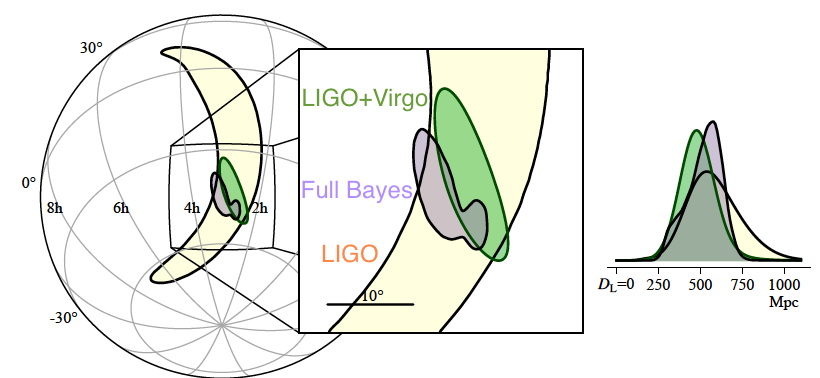
The region of the signal source in the sky: yellow - only LIGO, green - LIGO and Virgo together, violet - Baes location estimate taking into account all the parameters of the model based on LIGO and Virgo. Right: source range estimate.
In addition, the third detector, located in a different plane, allows us to make estimates of the HB polarization. In GR, gravitational waves stretch and compress space perpendicular to their direction of propagation, and there are two polarizations (x and +)

Picture by Tom Dunne
When the GW arrives at the detector strictly perpendicular to the interferometer plane and the shoulder orientation coincides with the polarization, the signal amplitude reaches a maximum. If, for example, x polarized wave arrives at a detector rotated 45 degrees relative to it, both arms stretch in the same way and the interference pattern at the output does not change, that is, there will be no signal. If there are two detectors located in different planes, like LIGO and Virgo, the signal amplitude will differ not only due to the slope relative to the direction of propagation, but also due to the different orientation of the detector with respect to polarization. This allows us to estimate the HB polarization. Both LIGO detectors are practically in the same plane, and of close orientation, but Virgo is located at a large angle, which significantly improves the estimates.
Here's an interesting point: the metric theories of gravity (and GR only one of them) allows not only tensor (as in GR), but also vector and scalar polarization. The ability to measure polarization allows you to check whether we are measuring the tensor polarization. For this, the same calculations for the fusion, as in the case of GR, are performed under the assumption of scalar or vector polarization, and the result is compared with the real signal. As a result, GRT turns out to be a more probable model than a purely scalar or purely vectorial model.
The second cycle of observations is completed, and scientists process the data. The detectors are under maintenance, and the next scientific cycle will begin in about a year. During this time, the laser power will be increased, the light scattering loss will be reduced, and possibly compressed light will be added.
Stay tuned!

Assessment of the location of all registered sources of gravitational waves. The GW170814 is determined with much greater accuracy by using data from three detectors.
About signal

Top row: signal-to-noise ratio for three LIGO Hanford, LIGO Livingston and Virgo detectors; middle row: change in signal spectrum over time; bottom row: time signal (color), filtered signal (gray) and superimposed GR model (black)
As in the previous three times, the source of the signal was the merging black holes of masses 25 and 30 solar, at a distance of about 1.5 billion light years. As a result of the merger, a black hole with a mass of ~ 53 from the solar one formed, and ~ 2.7 solar masses were transformed into gravitational waves. Signal-to-noise ratio 18 gives the probability of an erroneous signal 1 in 27 thousand years. The signal itself correlates well with GR, there are no surprises here. The most interesting is the fact of detection on three detectors, and additional knowledge that we can get from this.
All the facts in the tablet 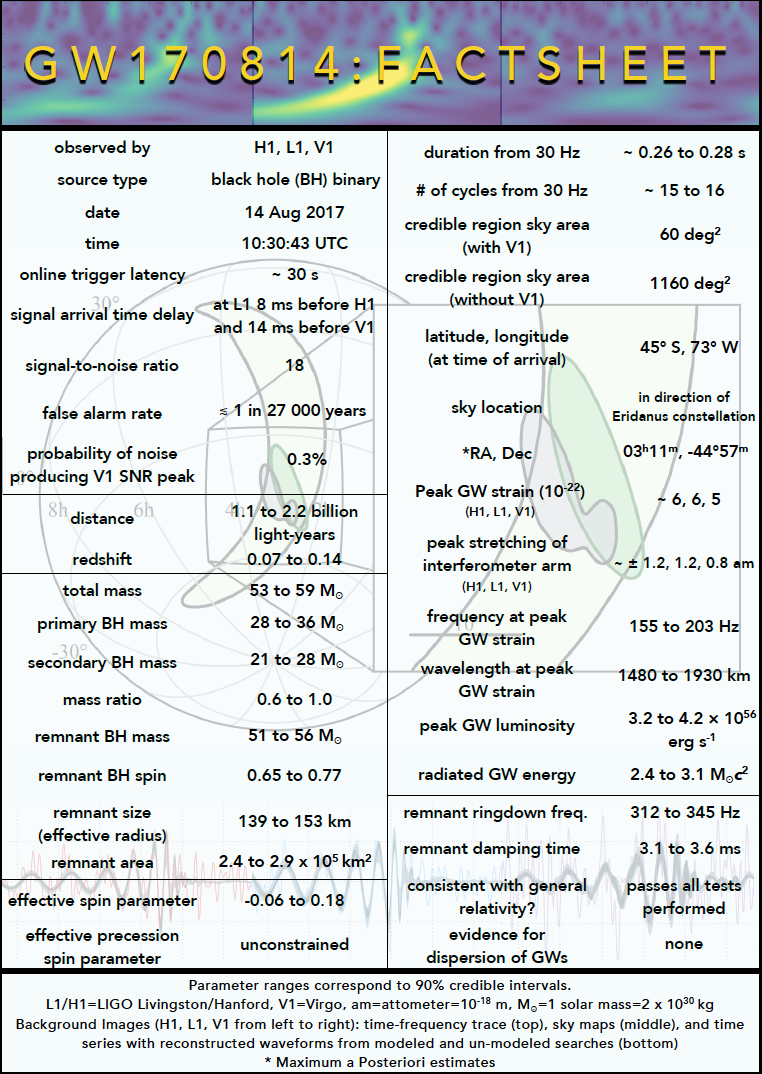

Advanced virgo

The European detector is located near Pisa, in Italy. The Virgo collaboration brings together scientists from Italy, France, Holland, Poland and Hungary. The detector itself is similar to Advanced LIGO, but with less sensitivity due to several factors: it is somewhat shorter - the length of the interferometer arms is 3 km, not 4, as in LIGO; mirror hangers are made of metal (less good quality and more thermal noise); less powerful laser; noise monitoring and filtering systems at an earlier stage of implementation.
As a result, the sensitivity at high frequencies is several times less than LIGO, and the detector itself is quite noisy. The spectrum clearly shows the unfiltered noise of the mains supply at 50 Hz, as well as peaks from different control signals.

The spectral noise density of the detectors (with filtered known noise). The lower the noise, the higher the sensitivity of the detector.
How does the third detector help in detection?
The low sensitivity of Virgo hardly makes it possible to recognize a signal in noise (as seen in the second picture in the article), and without LIGO this signal would not have been recognized as sufficiently reliable. However, in combination with two LIGO detectors, it allows the source to be triangulated with much greater accuracy.

The region of the signal source in the sky: yellow - only LIGO, green - LIGO and Virgo together, violet - Baes location estimate taking into account all the parameters of the model based on LIGO and Virgo. Right: source range estimate.
In addition, the third detector, located in a different plane, allows us to make estimates of the HB polarization. In GR, gravitational waves stretch and compress space perpendicular to their direction of propagation, and there are two polarizations (x and +)

Picture by Tom Dunne
When the GW arrives at the detector strictly perpendicular to the interferometer plane and the shoulder orientation coincides with the polarization, the signal amplitude reaches a maximum. If, for example, x polarized wave arrives at a detector rotated 45 degrees relative to it, both arms stretch in the same way and the interference pattern at the output does not change, that is, there will be no signal. If there are two detectors located in different planes, like LIGO and Virgo, the signal amplitude will differ not only due to the slope relative to the direction of propagation, but also due to the different orientation of the detector with respect to polarization. This allows us to estimate the HB polarization. Both LIGO detectors are practically in the same plane, and of close orientation, but Virgo is located at a large angle, which significantly improves the estimates.
Here's an interesting point: the metric theories of gravity (and GR only one of them) allows not only tensor (as in GR), but also vector and scalar polarization. The ability to measure polarization allows you to check whether we are measuring the tensor polarization. For this, the same calculations for the fusion, as in the case of GR, are performed under the assumption of scalar or vector polarization, and the result is compared with the real signal. As a result, GRT turns out to be a more probable model than a purely scalar or purely vectorial model.
What's next?
The second cycle of observations is completed, and scientists process the data. The detectors are under maintenance, and the next scientific cycle will begin in about a year. During this time, the laser power will be increased, the light scattering loss will be reduced, and possibly compressed light will be added.
Stay tuned!
Additions
- Beautiful simulation of merger BH
- A beautiful picture of the sky with sources of HB

- Interactive sky map with sources
- In the last article and discussions to it, I was careless about how to detect grav. waves can help assess their speed of propagation.
DetailsIn particular, I said that using two detectors in “triangulation” can give a good estimate for this speed.
This is not true, if we estimate the speed simply by the signal delay between the two detectors, we can only limit this speed. The propagation direction with the help of two detectors is rather difficult to determine, and even using data from all detections, but taking into account all the uncertainties, the estimate can be given with an accuracy of 50%. Even three detectors give rather low accuracy, in the range of percentages. Here you can read more.
The estimate I gave comes from the estimate for the variance of the grav. waves, assuming the validity of GR. That is, detection allows us to say with very high accuracy that there is no dispersion of HBs, and therefore, in accordance with GTR, their speed is equal to the speed of light.
Thank you Serge3leo for the amendments.
All Articles